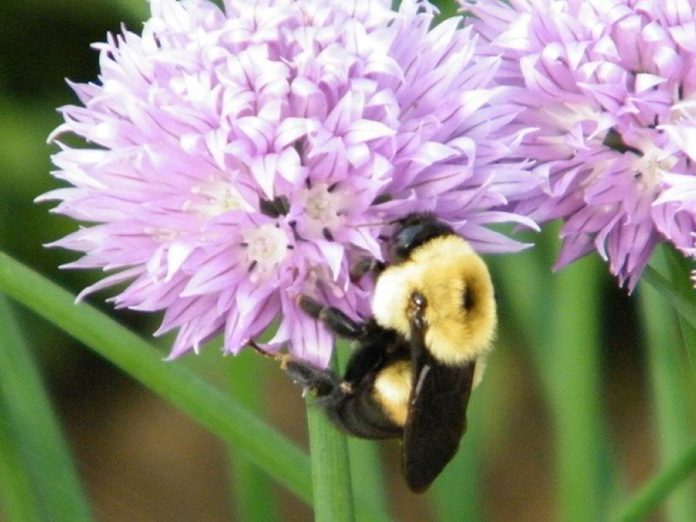
At yesterday’s meeting (June 27) of City of Kawartha Lakes Council, council resolved to submit an application to become the next “Bee City” designated by Bee City Canada.
Bee City Canada encourages municipalities and their residents to support bees and other pollinators on both public and private land and foster environmental awareness around this issue.
Since the Bee City program was first launched in the United States in 2012, 45 American cities have achieved Bee City certification. Since Bee City Canada came on board in 2016, six communities across the country have joined.
In Kawartha Lakes, a committee will be formed under City of Kawartha Lakes Environmental Advisory Committee (CKLEAC) consisting of community leaders, city staff and local experts to coordinate efforts.
“Becoming a Bee City will make Kawartha Lakes a visible role model for progressive initiatives designed to protect and encourage native pollinator populations,” says CKLEAC committee member Susan Blayney. “This is something we can all feel good about.”
Other commitments include displaying Bee City signage in a prominent location, maintaining information available to the public on initiatives to support pollinators, and annually recognizing Pollinator Week in the third week of June.
Kawartha Lakes is currently undertaking initiatives in support of a healthy pollinator population, including the Fenelon Landfill Pollination Project. This project involves a new type of seed mix that will be tested on the top of the landfill to promote the habitat of pollinating insects such as bees and butterflies.
Honey bees have experienced massive die-offs, but wild native bees also face challenges. These insects are responsible for the growth of 30 per cent of crops and 90 per cent of all wild plants. In this way, pollinators are vital to a healthy and resilient ecosystem.
The conservation of pollinators is critical to the sustainability of Kawartha Lakes’ natural areas, urban gardens, and small-scale farms. Certain pollinator species have been determined to be in decline due to habitat loss, climate change, pesticide use and disease or parasites.


























